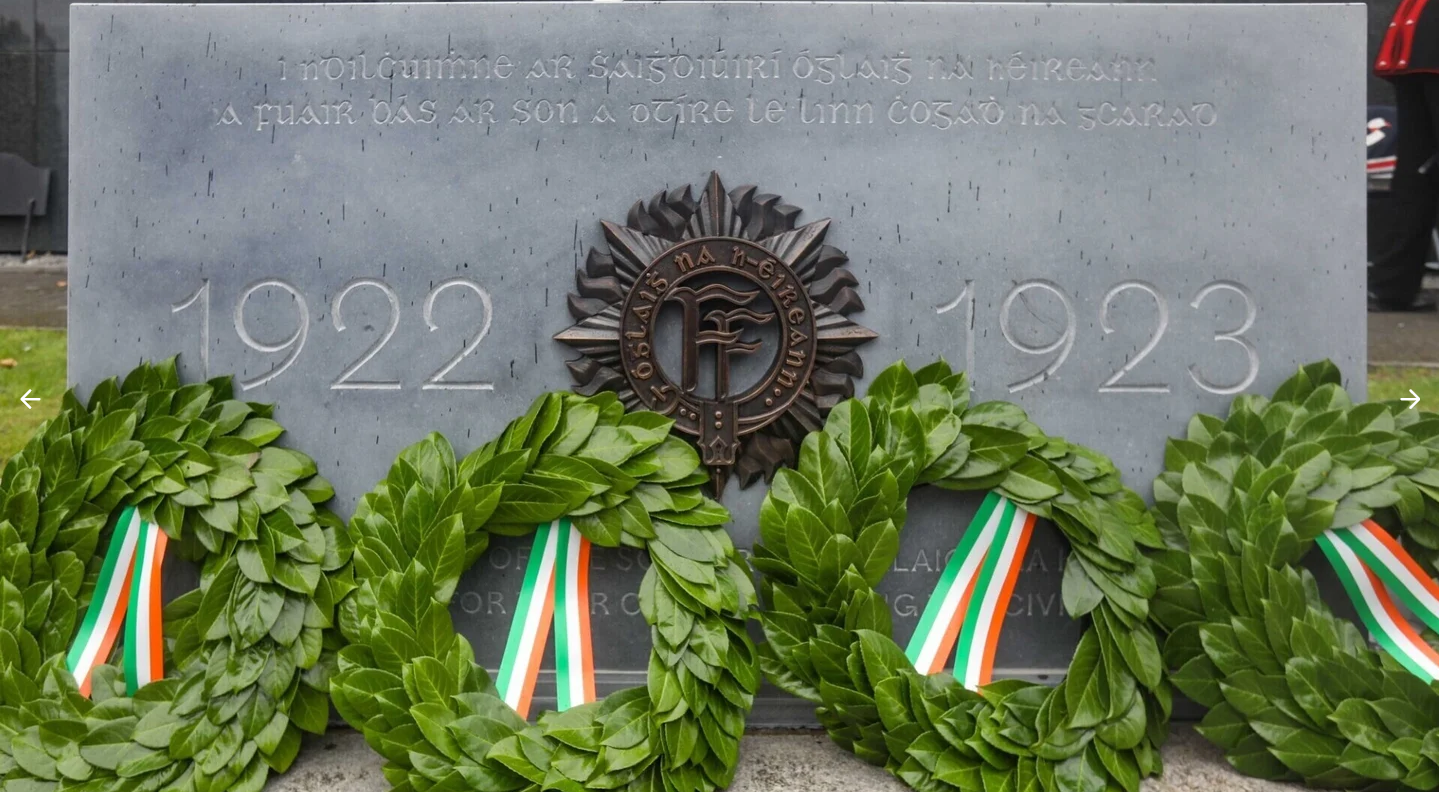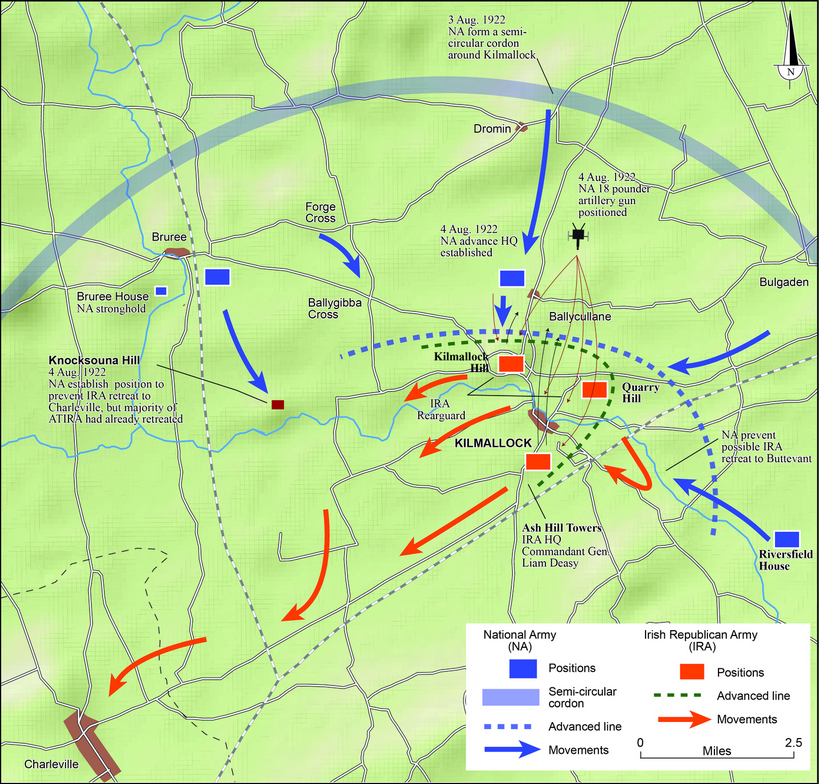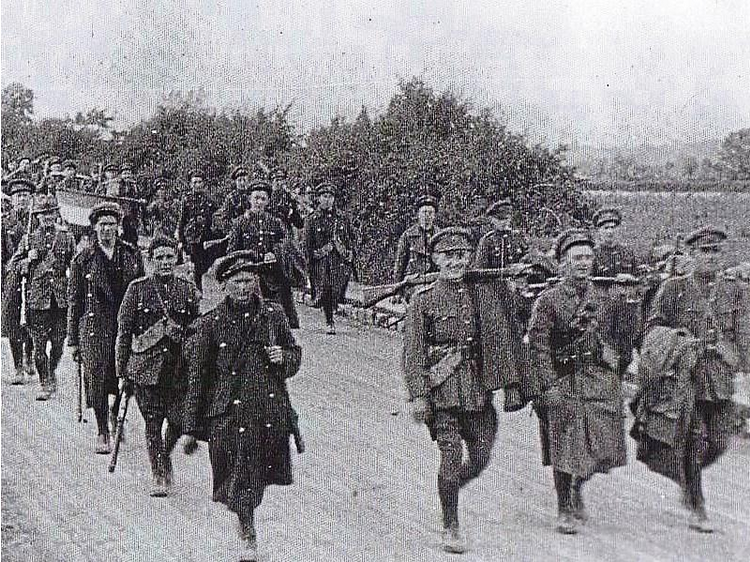The Forgotten Fallen

The Forgotten Fallen
4630 Private Daniel Mahony
“That tragedy is compounded by the oblivion that descended on those who lost their lives defending the democratic will and institutions of the Irish people, up to 1000 soldiers of all ranks, from private soldier to commander-in-chief, who died in the uniform of their country, wearing the cap-badge of the Irish Volunteers “Óglaigh na h-Éireann” founded less than ten years previously to gain Ireland’s freedom. Their sacrifice and their loss to their loved ones goes largely unacknowledged and un-commemorated by the Irish state to this day. Their loss to memory contrasts to a notable extent with the fate of many who took up arms against them and paid with their lives. Many of the opponents of the National Army are commemorated by monuments, ceremonies, poetry, and song right around our land to this day. Many of their opponents’ names have lived on in history, while memory of most of those in the National Army who gave their lives for their country seems long erased.”
Senator Michael McDowell
Glasnevin Cemetery
25th November 2022
The Irish Civil War reached its critical turning point with the Irish Free State offensive that took place from July to September 1922. This strategic military operation was executed by the National Army, the armed forces of the newly established Irish Free State, against strongholds held by anti-treaty forces in the southern and southwestern regions of Ireland. When the Civil War began in June 1922, the Irish Free State government, comprised of leaders who had accepted the Anglo-Irish Treaty, held control over Dublin, where its military forces were concentrated, as well as some parts of the midlands and north. The nascent National Army consisted of loyal units from the Irish Republican Army, along with recent recruits. However, at the onset of the conflict, it was relatively small in size and inadequately equipped.
Large portions of the country, especially in the south and west, remained beyond the Free State's authority, under the control of anti-Treaty factions within the IRA. These groups refused to acknowledge the legitimacy of the newly formed state and maintained that the Irish Republic established in 1919 was the rightful all-island government. This situation changed swiftly in July and August of 1922 when Michael Collins, the commander-in-chief of the Free State forces, initiated the offensive. This offensive operation successfully reclaimed major towns on behalf of the Free State Government and marked the conclusion of the conventional phase of the conflict. Following the offensive, a period of ten months characterized by guerrilla warfare ensued, eventually leading to the defeat of the republican faction.
Who is Daniel Mahony? My initial encounter with this name occurred in Billy Fitzpatrick's 2020 publication "Rebel Aghada." In this book, Fitzpatrick enumerates the members of Aghada L Company in 1935, providing their names, addresses, and locations based on information from Joseph Cosgrove and John O'Shea of the Veterans Association. Curiously, the specific document referred to by Fitzpatrick (MA/MSPC/A/1(10) 10 Battalion 1Cork Brigade or MA//MSPC/RO/31 Cork 1st Brigade, 4th Battalion) lacks the ages of these individuals. Instead, it highlights several men who had passed away before 1935. According to Military Archives records, a minimum of seven men were deceased, prompting my interest in their fates. This marked the inception of my quest for answers.
Daniel Francis Mahoney was born on September twenty-fourth, 1902, in Pound Hill, Millstreet, to his parents Stephan and Kate Mahoney, whose maiden name was Moynihan. Among his four siblings were John, who ventured to America, and Mary Anne, both born in Killarney, Co. Kerry. Helena was born in Millstreet, while Kathleen's birth took place in Aghada in 1914. Between the 1901 and 1911 censuses, the Mahoney family relocated to Upper Aghada. Stephan, who engaged in various occupations, was recorded as a painter in the 1911 census, while Kate, once a nurse in an asylum, identified as a midwife in both the 1911 census and her military pension claim. After her passing, she was recognized as the district nurse in Aghada. The final resting place of Daniel Francis Mahoney's parents and two sisters is the old graveyard in Aghada (Historical graves CO-AGDO-129). As per Kate Mahoney's pension account, Daniel joined the Free State Army shortly after the commencement of hostilities. It wasn't long before Daniel and numerous others met their tragic destinies. The perplexing question remains: Why was Daniel Francis Mahoney omitted from the pages of the book "Rebel Aghada"?
The Battle Unfolds
On the 23rd of July, a Sunday, the Free State forces successfully captured Bruff and initiated their push towards Kilmallock. However, they faced determined resistance from the Republicans, resulting in their advance being repelled twice. The subsequent day, the Republicans launched a counter-attack, managing to regain control of Bruff and taking 76 prisoners. In light of this setback, O'Duffy decided to temporarily halt the advance and await reinforcements. With the arrival of these reinforcements, the Free State forces swiftly recaptured Bruff. Nevertheless, the situation worsened for the National Army as the week progressed. Their efforts to capture the Republican strongholds were sluggish, and their casualties increased. On Tuesday, the 25th of July, a unit from the Dublin Guard led by Tom Flood fell into an ambush on a narrow road. They fought their way out but suffered the loss of four soldiers. Two days later, three more Free State soldiers were killed. On the 30th of July, Major General Murphy launched an offensive to seize Bruree. The Dublin Guards approached the town from the southeast, supported by armoured vehicles and an 18-pound field gun. The Republicans held their ground for a span of five hours until the Free State artillery was brought into action. This engagement led to the deaths of at least thirteen Free State soldiers and nine Anti-Treaty combatants, along with numerous others being wounded, before the Free State troops eventually secured control over Bruree.
Strategically aware of Bruree's significance in defending Kilmallock, the Republican commander Deasy formulated strategies to retake the town. His plans involved the utilization of three armoured cars, trench mortars, and machine guns. On the 2nd of August, the Republicans successfully seized Patrickswell, situated south of Limerick. Subsequently, the armoured cars launched an unexpected assault on Bruree, catching the Free State forces entirely off guard. One of the cars targeted Commandant Flood's headquarters at the Railway Hotel. Employing the cover of Lewis gun fire, the Commandant and his unit managed to escape discreetly from the rear of the building. Simultaneously, the second armoured car forcefully struck the front entrance of another post located in the school house. This impact led to the surrender of the twenty-five troops stationed within. However, the arrival of Free State reinforcements, accompanied by additional armoured cars, brought the Republican counter-attack to a standstill. Guiding the reinforcements was Comdt. Gen. Seamus Hogan, who personally directed his troops while riding in the armoured car nicknamed 'The Customs House.' With their endeavour to seize control of the town falling short, the Republican forces made the decision to retreat as Free State reinforcements solidified their presence.
It was during this period O’Mahony lost his life,
Bodies of Four Soldiers Found
In Ditch
PASSED BY CENSOR.
(From Our Special Representative).
Limerick, Sunday.
The National troops are still posted outside Kilmallock, but since Friday they have had only a few brisk skirmishes with the Irregulars. They hold important strategic positions, and at the moment the men who occupy the town are left with very few and insecure avenues of escape. The main arteries to and from Kilmallock are in possession of our forces. Ballymudda cross roads, Bullycullane and the district from Bulgaden to Riversfield, in addition to the rectory in front of the station south of Kilmallock-all these points are commanded by the troops. On the map the position takes the shape of a query mark.
Just now the National forces in this command are taking a well-earned rest. The work of reorganising the army and formulating a plan of campaign is engaging the attention of the army chiefs preparatory to launching a big offensive against the remaining Irregular fortresses in Munster. On very reliable authority I was informed that there are at least one thousand Irregulars behind the walls of Kilmallock. Roving bands continue to prey on the unfortunate in habitants in the districts of Charleville and Buttevant.
A Shocking Sight
At Bruff Barracks this morning I witnessed a ghastly spectacle in the mortuary. Lying side by side were the bodies of four National soldiers who had been brought there in a motor ambulance on the previous night from the Bruree front. They were found dead in a ditch, and each had en shot in vital parts. All members of the 1st. Cork Brigade, their names are:-
Volunteer P. Murphy (bullet in heart).
Volunteer P. Carey, Inch, Youghal (shot through mouth).
Capt. Power, address believed to be Mill Road. Youghal (brains blown out), and
Volunteer D. O'Mahony, Aghada (wound in head).
How they came by their deaths remains unsolved for the present but a sinister feature to the affair is supplied by the fact that when found Capt. Power's hands were tied with a strap. The significance of this, if significance can be attached to it, must remain undiscussed till further particulars are available and the full facts of the case come to our Knowledge.
I made a cursory inspection of the bodies. They were all young men, and, I am told, had seen active service during the war with England. Captain Power, a tall, dark-haired young soldier, received shocking injuries. During the morning the mortuary was visited by many of their comrades in arms, and prayers recited for the happy repose of their souls. It was a piteous sight. Hardy soldiers were on the verge of tears.
Freeman's Journal 1763-1924, Monday, July 31, 1922

Map from The Atlas of the Irish Revolution edited by John Crowley, Donal Ó Drisceoil, Mike Murphy and John Borgonovo
The Republican Fortunes Take a Turn
After successfully repelling a Republican counterattack and holding their ground in Bruree, the Free State forces geared up for the capture of Kilmallock itself, anticipating a formidable battle ahead. Con Moloney, the Republican Adjutant General, remarked on August 2nd, "Until yesterday, we maintained a dominant position in the operations around that area (Kilmallock). However, I am concerned that a significant shift is imminent due to the substantial reinforcement the enemy has received." In the region of the 3rd Western Division, Republican forces had essentially disbanded – they were reluctant to confront the Free State troops, had ceased their road destruction activities, and were disheartened, in part due to the stance of the Catholic church. On Thursday, August 3rd, a robust Free State contingent of 2,000 soldiers, backed by armoured vehicles and artillery, initiated an advance on Kilmallock from Bruree, Dromin, and Bulgaden. The following day, an additional 700 troops, accompanied by an armoured car and a field gun, joined the ranks. By Saturday, Free State forces had completely encircled the town. The Dublin Guard was also present to prevent any escape attempts by Republican units. Positioned three miles away, Free State artillery was deployed and commenced shelling Republican positions on Kilmallock Hill and Quarry Hill, ultimately wresting control of both hills. Consequently, the National Army had amassed an overwhelmingly superior force to quell resistance in Kilmallock. Nonetheless, they were bracing themselves for a tough struggle before securing the town.
To their astonishment, upon entering the town, the Free State troops encountered only limited opposition from a Republican rear guard consisting of volunteers from Cork. The majority of the Republican forces had already abandoned their positions and retreated to Charleville.
The Forgotten Fallen, 4630 Private Daniel Mahony, is Aghada’s only fatality during the Irish Civil War.
Research into this subject ongoing.

A Free State Army column on the move during the Battle of Kilmallock, the largest single engagement of the Irish Civil War(Limerick Leader).